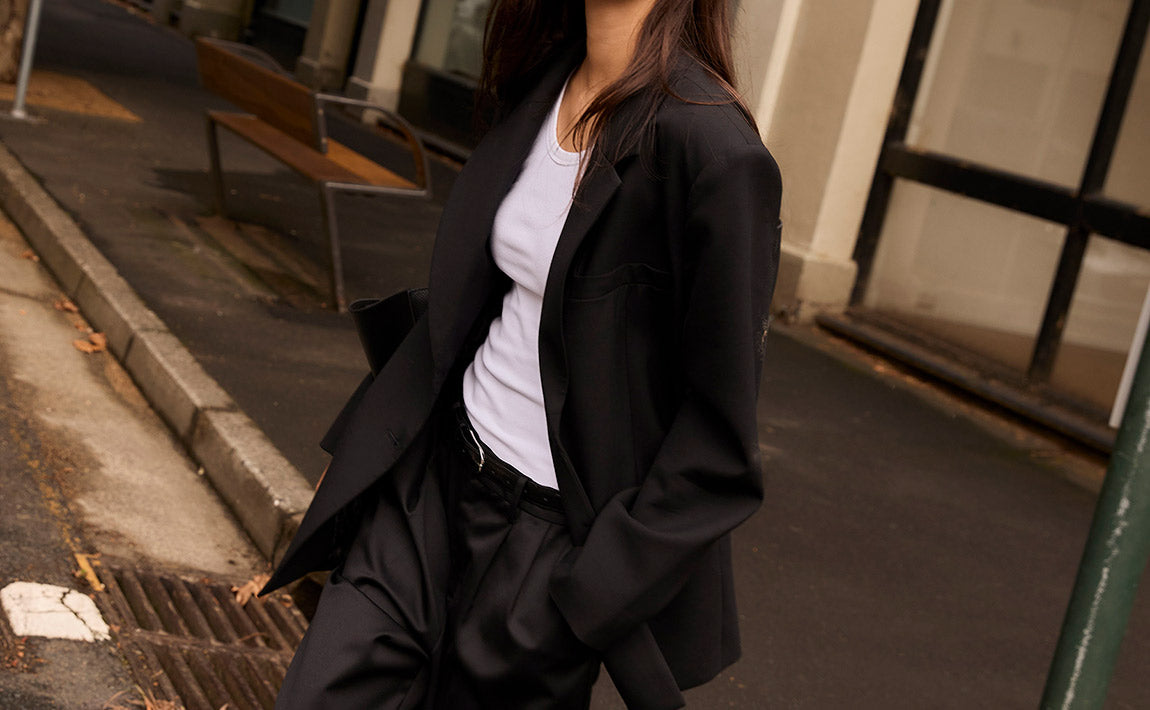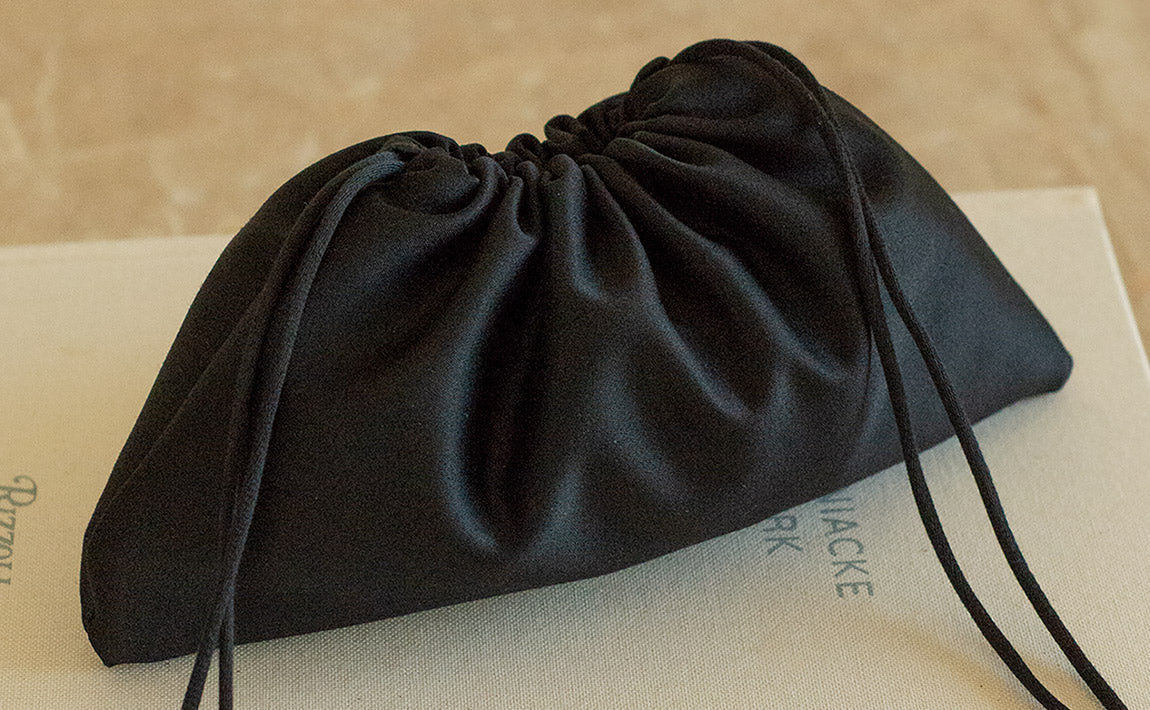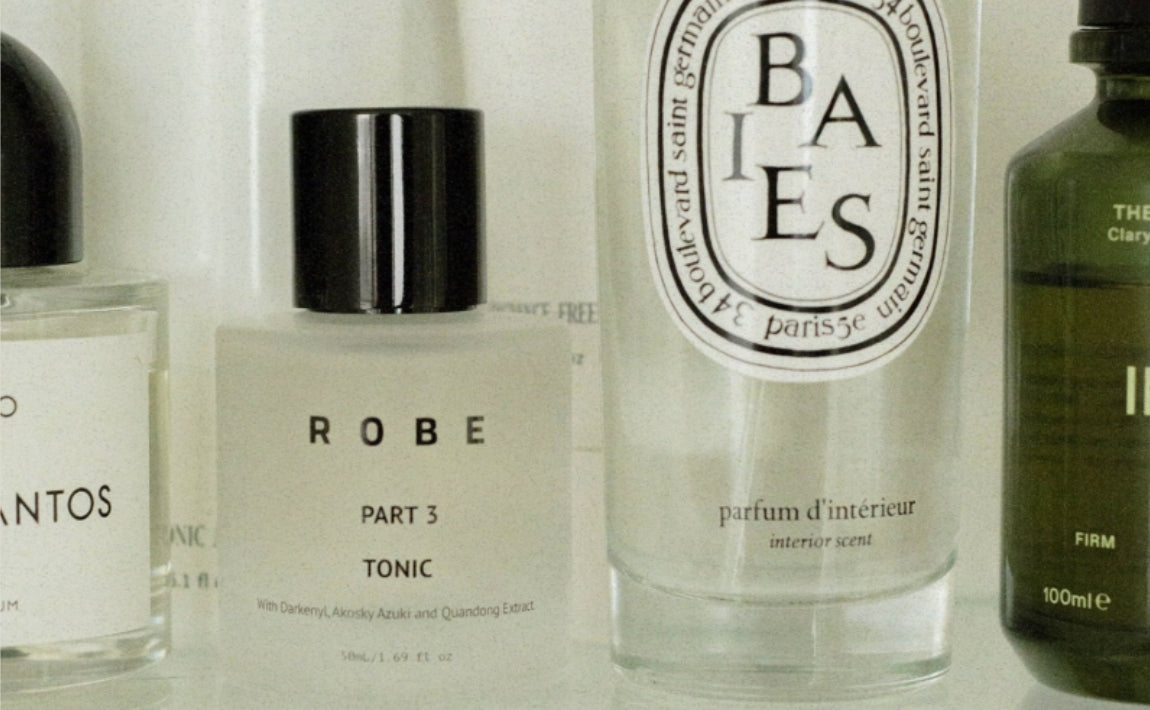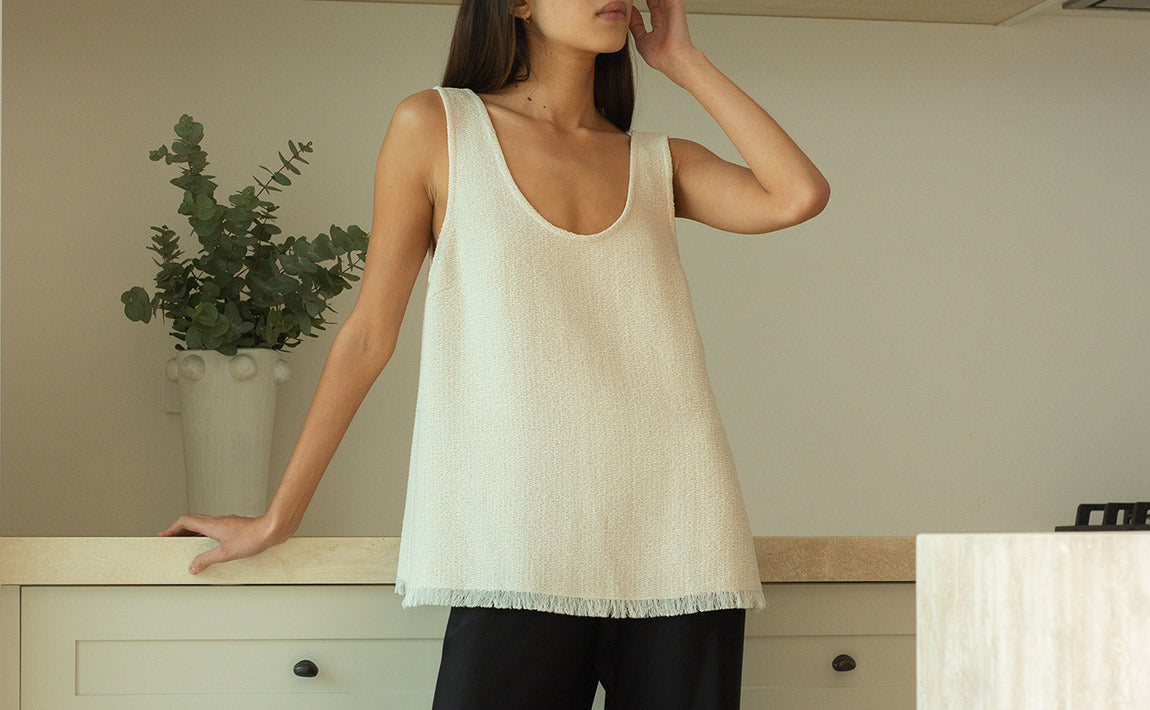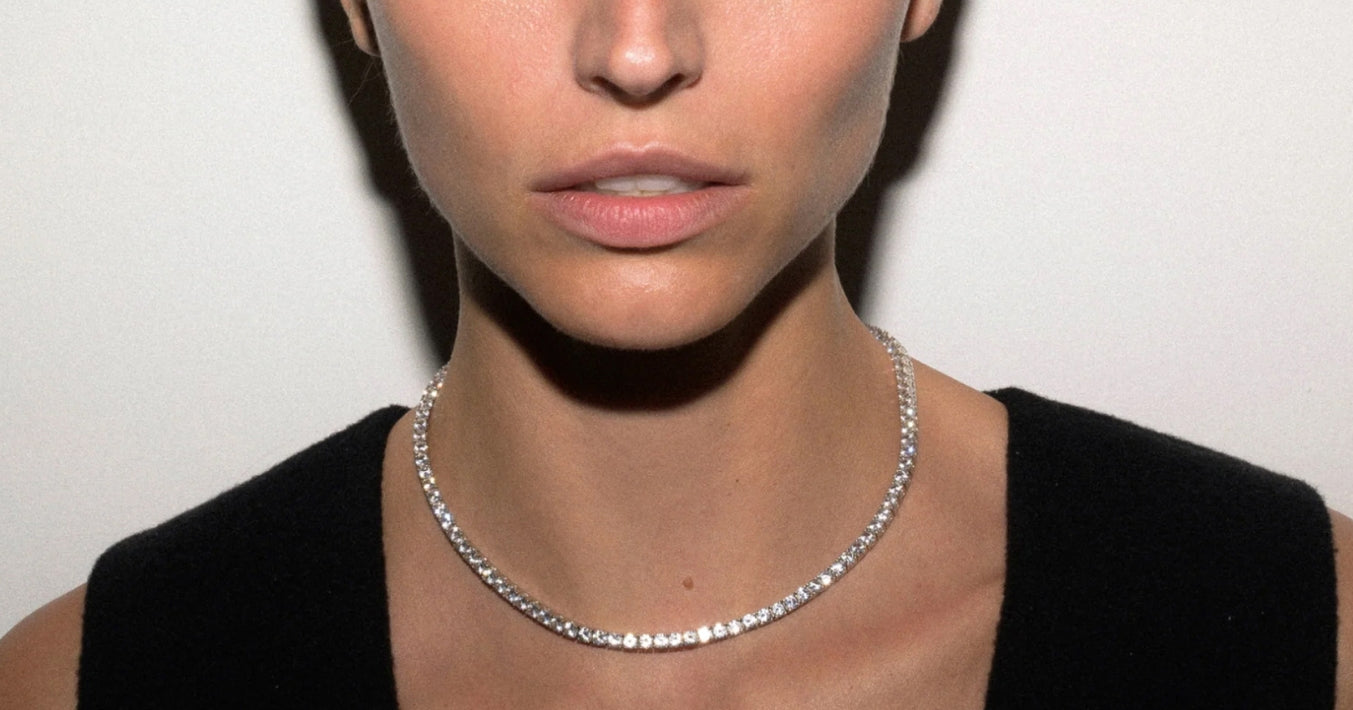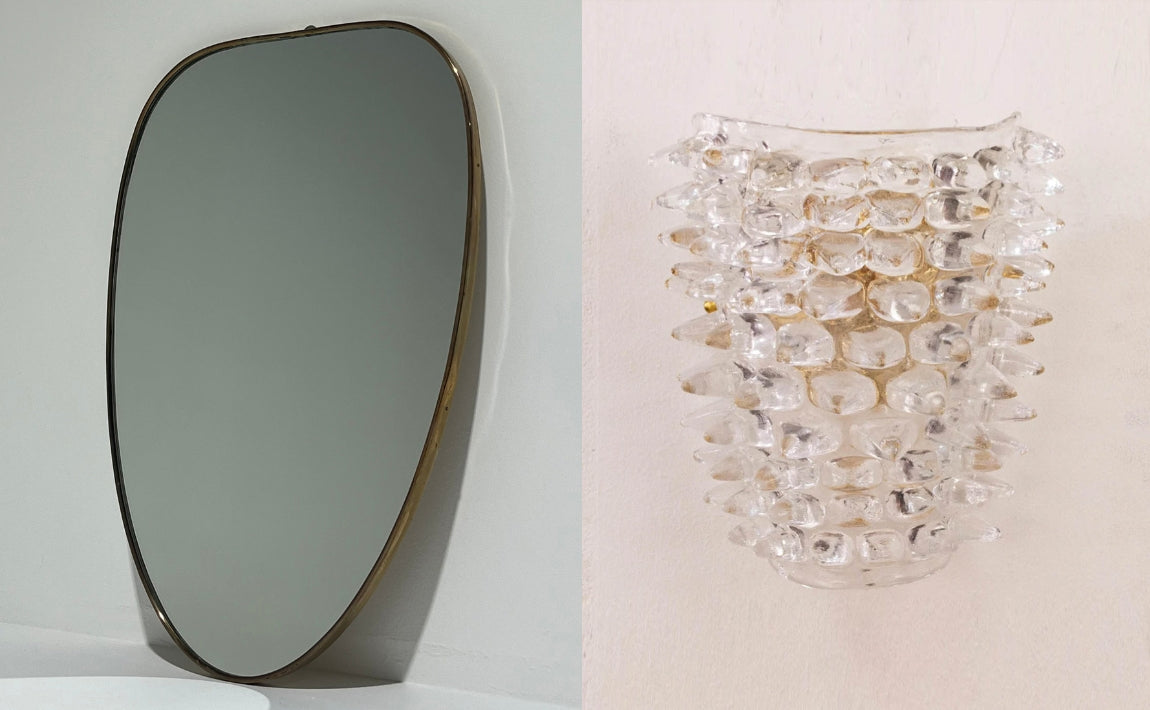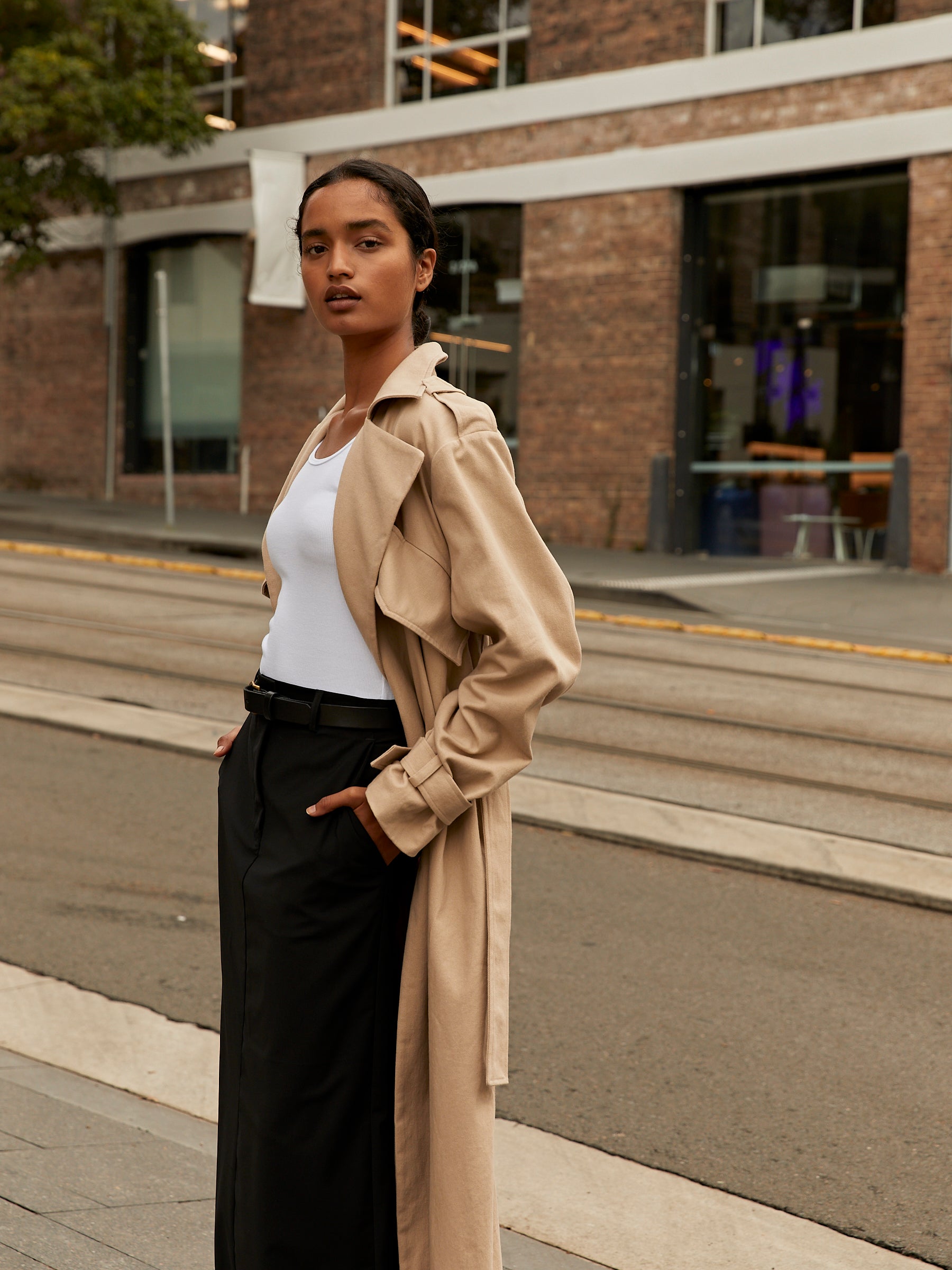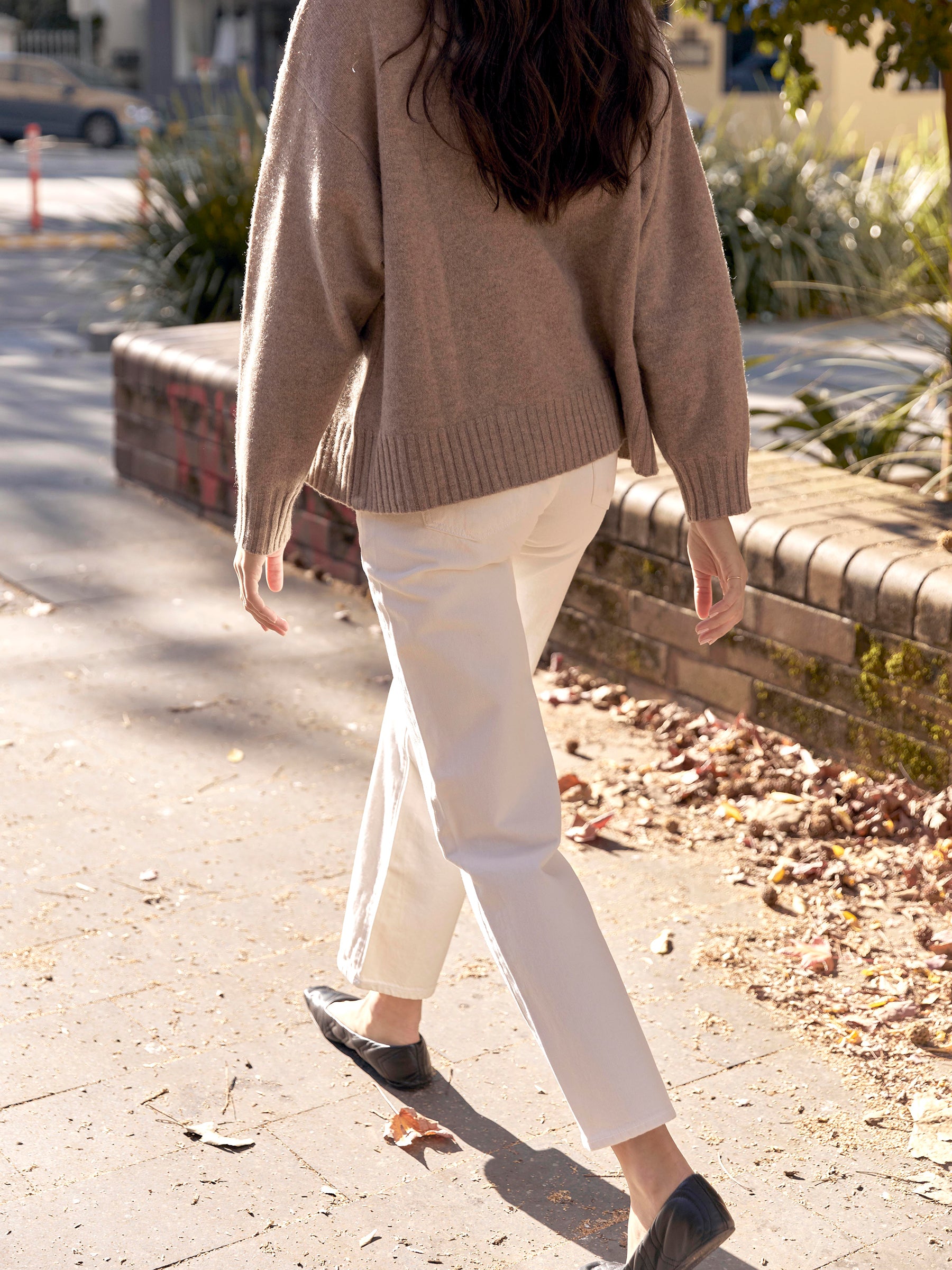3 Colour Rule: The essential style guide explained

There is no shortage of styling tricks offered today that all promise to make dressing a seamless experience. But there’s one in particular we always find ourselves coming back to: the ‘3 colour rule’.
This is actually a lesson learnt back in art class when planning out a creative art piece. Keeping your palette to a maximum of three core colours, supplemented with black and white, ensures your artwork isn't going to be too complicated for the viewer. Instead of the eye bouncing around, not knowing where to land, keeping it to those three colours provides a palatable piece, balanced and refined.
And given the frequent intersection of the worlds of art and fashion, it only makes sense that the ‘3 colour rule’ would too be a game changer when it comes to styling a look. In fact, the rule is so effective, that we’ve found it to be a surefire way of creating the quintessential ‘Undone’ look.
When it comes to applying the ‘3 colour rule’ to your looks, the process is relatively straightforward (as the self-explanatory name suggests), but as always there is some nuance to the rule that allows you to personalise the rule to your own individual style.
What is the 3 colour rule?
The 3 colour rule is a styling guideline that suggest your outfit should be made up of three colours. A dominant colour, a secondary colour and an accent colour.

Blacks and whites are the exception
While many of you reading are likely subscribers to a monochromatic approach to dressing, for those who like to work neutrals or a touch of colour to their outfits, this first point is an important one.
As mentioned above, even if your look already consists of three colours, you can still introduce the addition of black or white into a look. Given they’re technically shades rather than colours, they’re non-intrusive within a look, and can provide a grounding, foundational point within an outfit. For example, if your look consists of white and a couple of different neutral shades, you can also bring black in as a fourth ‘colour’. Or if you’re wearing blue denim with a white t-shirt and black belt and shoes, you could consider adding a red cardigan atop the outfit.
Having said that, making black or white a primary element within your outfit does lend to a cleaner look, even when introducing a pop of complementary colour or a couple of neutral hues into it.

Be careful with print
If you are one to occasionally wear print, you can still dress in line with the ‘3 colour rule’ but you’ll need to be a little strategic about it.
If you’re working a print into your look — via a summer maxi dress, or a striped button down, for example — be sure to contain the rest of your look to the palette within your print, and ensure you’re still only working with three colours within your overall look to keep it polished and cohesive.

Look to the ‘Golden Ratio’
A crucial element to the ‘3 colour rule’ is the consideration of proportion and silhouette. It’s important to note straight up that, just because you’re using three colours within an outfit, you don’t have to use each in equal measure. In fact, we’d advise against it!
This asymmetric approach is one that’s steeped in nature and design principles for the ultimate in organic harmony — most commonly known as the ‘Golden Ratio’, or in its slightly less mathematical form, the ‘Rule Of Thirds’, the process involves going off-centre with your design; in line with the ‘Golden Ratio’, your outfit should roughly be configured 1:2, and when introducing additional elements, you should divide the smaller segment using the same ratio (here, find a helpful visual); for the ‘Rule Of Thirds’, the approach is much the same, but tends to stick simply to the 1:2 ratio.
Put simply, a ‘3 colour rule’ outfit will consist of a dominant colour, that will make up the majority of an outfit, then will introduce a secondary colour that should take up roughly a third of your outfit, and finally, will offer an accent colour, all of which should be complementary to each other.

Lean on ‘Colour Theory’
Ok, so now you know to stick to three key colours for each outfit — but which colours exactly? Traditionally, colour theory has taught us that analogous colours, as well as complementary colours, are two ways in which we can create a harmonious palette. But other aesthetically inclined individuals have come up with their own approaches in recent years.
Take Founder and Creative Director of Tibi and social media personality, Amy Smilovic, who wrote a whole book on being pragmatic about how we dress, a core tenet of which offered its own take on colour theory. Put simply, Smilovic uses 4 rings of colour — at the centre is black which, as discussed above, doesn’t count in the ‘3 colour rule’; ring two is made up of neutrals, ring three is a diffusion of these neutrals; ring four consists of those bright and bold colours. As dictated by each rings’ proportions, the further you veer from the centre, the less the colour should feature in a look.

Consider your complexion
Depending on the level of coverage your outfit provides (or rather, doesn’t), your skin tone can also act as hue within a wider look when exposed. This is particularly the case within a monochromatic or neutral-heavy look, your skin tone supporting within a tonal look.
Play around with the level of skin exposure within a look — the typical rule of thumb is that if your top half is overly-exposing, then your bottom half should provide more coverage and vice versa. Push your sleeves up, wear jeans or trousers that crop at the ankle, look to a neckline that plunges, and see how that plays within the visual harmony of the ‘3 colour look’
In a similar vein, hair and makeup can too count as your ‘third colour’ — try styling your hair down, then up, to see how this impacts the overarching tones within your outfit, or wear a pop of colour on your lip in lieu of a brightly-coloured accessory.

Make the most of jewellery and hardware
Much like the presence of black or white pieces within an outfit, cool or warm metals by way of jewellery and hardware also work as neutral additions to a look. Add dimension and points of interests with these pieces while still very much sticking to the principles of the ‘3 colour rule’.

